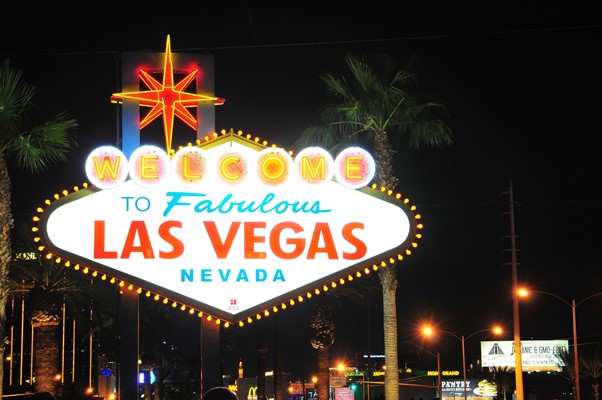Behind the Neon Lights: The Criminal Underworld That Shaped Las Vegas

Las Vegas sells a certain kind of fantasy. You land at the airport and you’re immediately greeted by slot machines, neon signs, and ads for magic shows and pool parties. But if you scratch just a little beneath the surface, the story of how this city came to be isn’t as clean as the brochures suggest.
In this article, we’ll discover the true story behind Las Vegas’ rise and uncover how a city built on risk was once run from the shadows. Long before it was a tourist destination or a pop culture icon, Las Vegas was a rough desert town that grew fast, in part because the rules were loose and the land was open. And where things move quickly and regulation is light, certain kinds of people tend to show up.
What most visitors don’t realize is that the city’s rise was closely tied to organized crime. Not just in passing, but at the foundation. And while the mob doesn’t run the Strip anymore, its fingerprints are still there, woven into the city’s history like old smoke in casino curtains.
Early Development and the Seeds of Control
The rise of Las Vegas began with a series of practical events, none of them tied to crime at first. In the early 1930s, southern Nevada was relatively quiet. That changed with the construction of the Hoover Dam, which brought thousands of workers to the region and created a need for lodging and entertainment.
Several factors turned this remote desert town into a magnet for opportunity:
- Gambling was legalized in Nevada in 1931.
- Las Vegas was just a few hours’ drive from Southern California, which meant that it was accessible to a large population.
- With limited regulation and plenty of open land, developers had freedom to build fast.
But what attracted honest investors also caught the eye of organized crime groups. Las Vegas offered both space and opportunity, without the heat from law enforcement.
Mob Money and the Golden Age of Casinos
After World War II, Las Vegas started to change fast. What had been a dusty desert stopover turned into something much bigger. People call the 1950s and 60s the golden age of Vegas, and it was but not just because of bright lights and big shows. A lot of the money behind that boom came from places most tourists never saw.
Organized crime groups from cities like New York, Chicago, and Cleveland started putting their money into casinos. These guys weren’t just gangsters; they were smart investors who saw Las Vegas as a way to make real money and clean up the cash they earned from less legal ventures.
A few key moments pushed things forward:
- Bugsy Siegel was tied to the New York mob and helped get the Flamingo Hotel off the ground in 1946. The project went over budget, and things didn’t end well for Siegel. Still, Flamingo set the tone: sleek, flashy and designed to keep people spending.
- Much of the funding for these early casinos didn’t come through banks. Instead, money moved through shell companies and quiet partnerships, often set up to hide who was really behind the scenes.
- Blending legal and illegal activities, including laundering money through casino operations.
The casinos gave the mob a way to make their money “clean,” while still offering opportunities for under-the-table profits. On the surface, everything looked legitimate.
Tactics of Control: Skimming, Intimidation, and Fronts
Once they were in, the mob wasn’t about to let go. They developed ways to quietly control operations, avoid taxes, and keep their money flowing.
One of the most common methods was skimming. This meant taking a portion of the casino’s earnings, before the money was ever counted officially – and sending it back to mob families in other states.
Other control tactics included:
- They used legit-looking businesses: Hotels, bars and shops were often just covers for mob activity.
- They paid people off: Bribes kept local officials and police from getting too curious.
- They used threats when needed: Intimidation made sure people stayed quiet and followed orders.
- They planted people inside: Some casino staff worked directly for the mob, while others were paid to look the other way.
Law Enforcement and the Beginning of the End
By the 1970s, the U.S. government was finally paying attention. Vegas wasn’t just a desert gambling town anymore, it was big money, and people were watching. One key weapon was the RICO Act, a law that let authorities go after whole crime networks.
Once the law stepped in, things started to crack. Agents were listening in, watching closely and building cases piece by piece. And when a few people on the inside decided to talk (guys who knew where the money went), it all began to fall apart.
The Modern Legacy: What Remains Today
Today’s Las Vegas is corporate, clean, and closely monitored. Most of the casinos on the Strip are owned by publicly traded companies or large investment groups. The Nevada Gaming Commission keeps a tight grip on operations.
But that shadowy history hasn’t disappeared. In fact, it’s been packaged and sold to tourists:
- The Mob Museum, located downtown, offers a full account of the city’s criminal past.
- Guided tours take visitors to sites tied to mob events and early casinos.
- Documentaries and films continue to keep the story alive in popular culture.
Things run differently now. Today’s casinos are run by corporations, not gangsters – it’s all about rules, tech, and big marketing. Some are even testing out crypto and blockchain for games and payments. Definitely not the old days of cash-stuffed envelopes and shady backroom deals.



